Everything you need to make the transition from the gym to the crag

Essential Gear for Outdoor Sport Climbing. Photo by Barrabes
For many people, sport climbing (whether indoors or outdoors) is the first step into more technical vertical pursuits such as multi-pitch climbing, trad climbing, or classic mountaineering. However, sport climbing is also a popular discipline of its own—one that’s quite addictive. In this article we’ll take a look at exactly what sport climbing is and what basic gear you’ll need to practice it safely. You’ll also find links to articles that go more into depth on each specific type of gear. We recommend you check those out as well.
Disclaimer: Climbing, like any other mountain activity, is inherently dangerous and requires training by a certified professional. No one should start climbing on their own without proper instruction. Ask at your local climbing gym about introductory climbing courses or on the internet for certified guides in your area.
Before we get started, let’s explain exactly what sport climbing is.
What is sport climbing?
Sport climbing involves high-intensity climbing on relatively short routes. Compared to traditional climbing (or “trad climbing”) or multi-pitch routes, which can be hundreds of meters long, sport routes are generally 10-40m long. What makes the route a sport route is the fact that it’s bolted , meaning replaced, fixed bolts and anchors are either screwed or glued into the rock as a form of protection that is both easy to use as a system and extremely safe and reliable. By using fixed bolts and anchors, climbers minimize the amount of risk involved in climbing and can focus instead on the climbing itself. This allows them to push their physical limits beyond that of trad climbing, where gear placement and risk management are often a limiting factor on just how far you can push yourself physically.
Essential Gear for Sport Climbing
Here we’ll go over all the gear you need for the specific discipline of outdoor sport climbing, from essential gear to recommend gear to some additional helpful accessories.
1. Climbing Shoes
One of the most important pieces of equipment for this sport, climbing shoes (or rock shoes) are what allow you to stick to the rock. Despite what some people who are new to the sport think, rock climbing is more about footwork than about what you do with your hands. As you improve your technique, you’ll learn how to use your feet and body position to take weight off of your arms, allowing you to climb longer before tiring out. In order to do this, you’ll need a good pair of climbing shoes.
Sport climbing shoes can be highly extremely technical, and also quite uncomfortable. They shouldn’t be painful (especially not when you’re starting out), but compared to hiking or street shoes they need to have a very snug fit, and the shapes required for high-level climbing are designed for performance over comfort.

Tenaya Oasi, performance sport climbing shoe
When getting started, we recommend you look for a neutral shoe as opposed to an aggressive one. A neutral beginner’s shoe will be comfortable, more budget friendly and will provide support as you build up the strength in your feet. Nowadays there are lots of models that combine comfort, support and quality materials all at a reasonable price.

Scarpa Force V, a balance of comfort and performance
For more on the different types of climbing shoes and how to choose the right ones for you, be sure to have a look at the following article on our blog where we go into detail on this subject: “How to Choose Your Rock Climbing Shoes”.
We also go over one of the most problematic issues of climbing shoes in this article: how to choose the right size.
2. Sport Climbing Ropes
For sport climbing you’ll need a single rope (as opposed to twin or half ropes), generally somewhere between 60-80 meters (this will depend in part on the length of the routes where you plan to do most of your climbing). Since sport climbing is generally done in fair weather and dry conditions and terrain, expensive dry treatments aren’t 100% necessary, though they can help in extending the life of your rope by keeping it cleaner. They also tend to run more smoothly through your belay device.

Edelweiss Stonelight 9.8mm, entry-level single rope for sport climbing
For more information about the different types of climbing ropes, follow the link to this article, “How to Choose a Rope for Climbing and Mountaineering”, where we explain which type of rope (or ropes) is appropriate for each type of activity and why.
3. Harness
A climbing harness is another essential safety element. Since the protection in sport climbing is bolted into the wall, you won’t need to carry as much gear as for other climbing disciplines. All you’ll need are a set of quickdraws, a lanyard, chalk bag and a couple of locking carabiners. Sport climbing harnesses, as a result, have fewer gear loops and are generally thinner and more lightweight. Elastic leg loops instead of adjustable ones are also fine, since for sport climbing you generally won’t be wearing bulky mountaineering clothing.

Camp Energy, a good entry-level sport climbing harness
For more on harnesses, you can consult our guide “How to Choose a Harness for Climbing and Mountaineering”, where we talk about different types of harnesses and their characteristics.
4. Belay Device
When it’s your partner’s turn to climb, you’ll be on belay duty. Belaying involves using a device attached to your harness to manage the rope as the climber ascends the route, catching them if they take a fall, and lowering them back to the ground safely once they’ve reached the top. The most common type of belay devices for sport climbing are the so-called “assisted braking” devices, such as the Petzl Grigri. They are extremely safe when used correctly, as they help the belayer arrest a fall through different mechanisms that lock down on the rope when a sudden force is applied to it. The more traditional “tubular” belay devices, on the other hand, require more effort by the belayer to catch a fall and control the rope while lowering. Both types have their pros and cons for different situations, but assisted braking devices are more popular for sport climbing.

Petzl Grigri +, a user-friendly belay device for sport climbing
5. Quickdraws
Although there are fixed bolts in the rock in sport climbing, you’ll need another piece of gear to connect yourself and the rope to the bolts to catch you in case of a fall. This piece of gear is a quickdraw: two carabiners joined together by a stiff piece of stitched webbing called a “dog bone.” One carabiner goes to the bolt on the wall, and the rope is clipped through the other one. Quickdraws are an evolution of traditional runners used in mountaineering and trad climbing, but are made with stiffer and usually heavier material making them easier to grab onto and to place, and with specially designed carabiners to facilitate clipping.

Camp Photon Mixed Express quickdraws for sport climbing
You can’t climb outside without these. You’ll need a set of 10-12 draws to carry on your harness, using one at every bolt on a route.
6. Carabiners
A few locking carabiners are essential: one to attach your belay device to your harness, and another to clip in when cleaning the anchor on a sport route. Locking carabiners have a manual or automatic mechanism that keeps the gate from opening accidentally. You should always carry an extra on your harness just in case.

Edelrid HMS Strike Twist locking carabiner
For more details on the type of carabiner you’ll need and an overview of all the different types and their uses, be sure to take a look at the following article:
“How to Choose Carabiners for Climbing and Mountaineering”
7. Climbing Helmet
Nobody who values what’s inside their head would climb without a helmet. A helmet protects us from impacts against the wall during a fall, as well as from falling rocks or dropped gear while belaying or near the base of the wall. Don’t leave home without it.

Petzl Meteor climbing helmet
Be sure to use a certified, climbing-specific helmet for the proper protection. There is a wide range of options on the market in terms of weight, ventilation and design, including men- and women- specific models. The more comfortable the helmet, the less likely you’re to take it off, so find the right combination of fit, ventilation and design that fits you and your budget.
For more details on climbing helmets and what to look for, you can consult the following article before making your purchase: “How to Choose a Helmet for Rock Climbing”
8. Lanyard
Some climbers may think this is an optional piece of gear, but we disagree. For safety reasons, you should always use a lanyard for sport climbing to tether yourself to the rock during rope maneuvers. You’ll need it for anchor cleaning most importantly, and it can also come in handy at other times. You can buy pre-made ones such as the Petzl Connect Adjust, or you can buy a guide plate such as a Kong Slide and a 2m length of dynamic climbing rope to make your own.

Petzl Connect Adjust climbing lanyard
Additional Recommended Gear and Accessories for Sport Climbing
Up to here, we’ve covered the gear that’s absolutely essential for sport climbing, without which we can’t go climbing. Now let’s have a look at some other highly recommended gear that will increase the level of safety and/or generally make your life easier while climbing outdoors.
1. Climbing Chalk and Chalk Bag
Sweaty fingers won’t stick to the wall. Climbing chalk will greatly improve your grip, and you’ll need a chalk bag to hold it in as you climb. There are lots of options on the market in terms of composition, quality and texture, as well as classic powdered chalk and liquid chalk. Liquid chalk has become extremely popular for indoor climbing because it’s cleaner and the alcohol in it sanitizes your hands, but for outdoor it also has its use as a base layer. Some climbers like to apply liquid chalk while still on the ground, then dip their hands into their chalk bag full of powdered chalk as needed while climbing. The alcohol also acts as an additional drying agent for those with extra-sweaty hands.

Mammut Liquid Chalk – great for indoor and outdoor climbing
2. Other Useful Gear for Sport Climbing
Gloves could almost fall into the category of required gear, especially for new climbers. Gloves aren’t used for climbing, but rather for rope handling maneuvers such as belaying or rappelling. Improper technique can lead to rope burns, which can cause you to let go of the rope when you shouldn’t, possibly leading to an accident. Be sure to use climbing-specific gloves for this, which are tough and durable. Thinner gloves can rapidly be shredded handling climbing ropes.
More useful accessories for outdoor sport climbing:
- Belay glasses: prevent neck pain while belaying
- Clip stick: allows you to clip the first bolt(s) from the ground for added protection. Helpful on certain climbs with high or dangerous first bolts.
- Hand cream / file: for keeping your skin in good shape
- Climbing knife: for cutting webbing, etc.
- Climbing tape: for taping injured fingers and covering blisters
- Hand / forearm trainers: for strengthening / warming up your hands and forearms
- Kong Panic: “cheater” quickdraw for reaching and clipping out-of-reach bolts
Online Shop: www.barrabes.com/en-gb/







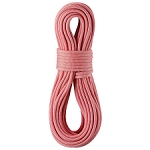

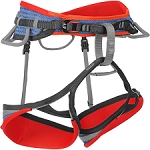

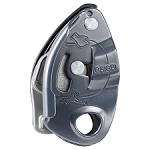

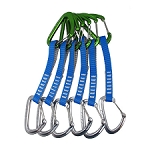

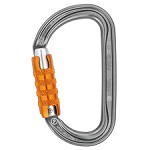



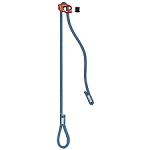


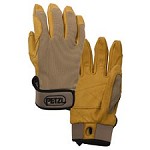

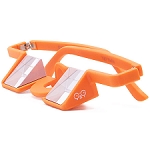
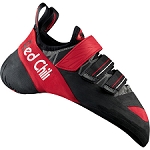




Leave a comment
Be the first to comment on this article.